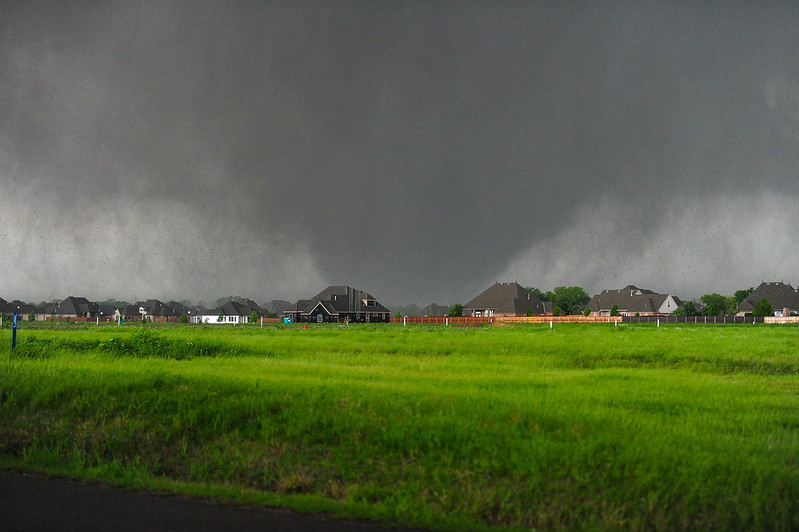 |
| EF5 Tornado as it reaches Moore, OK - Credit: wahoorob 80 at Flickr |
What we can say with confidence is that heavy and extreme precipitation events often associated with thunderstorms and convection are increasing and have been linked to human-induced changes in atmospheric composition.
Tornadoes "come from certain thunderstorms, usually super-cell thunderstorms," explained climatologist Dr. Kevin Trenberth, but you need "a wind shear environment that promotes rotation." Global warming may decrease the wind shear and that may counterbalance the impact on tornado generation from the increase in thunderstorm intensity.
Trenberth, the former head of the Climate Analysis Section of the National Center for Atmospheric Research, notes:
The main climate change connection is via the basic instability of the low level air that creates the convection and thunderstorms in the first place. Warmer and moister conditions are the key for unstable air.The climate change effect is probably only a 5 to 10% effect in terms of the instability and subsequent rainfall, but it translates into up to a 32% effect in terms of damage. (It is highly nonlinear). So there is a chain of events and climate change mainly affects the first link: the basic buoyancy of the air is increased.
Here is Trenberth again with some added context:
It is irresponsible not to mention climate change in stories that presume to say something about why all these storms and tornadoes are happening.The environment in which all of these storms and the tornadoes are occurring has changed from human influences (global warming). Tornadoes come from thunderstorms in a wind shear environment. This occurs east of the Rockies more than anywhere else in the world. The wind shear is from southerly (SE, S or SW) flow from the Gulf overlaid by westerlies aloft that have come over the Rockies. That wind shear can be converted to rotation. The basic driver of thunderstorms is the instability in the atmosphere: warm moist air at low levels with drier air aloft. With global warming the low level air is warm and moister and there is more energy available to fuel all of these storms and increase the buoyancy of the air so that thunderstorms are strong. There is no clear research on changes in shear related to global warming. On average the low level air is 1 deg F and 4 percent moister than in the 1970s.
 |
| Moore Tornado Aftermath - Creditwahoorob 80 at Flickr |
No comments:
Post a Comment